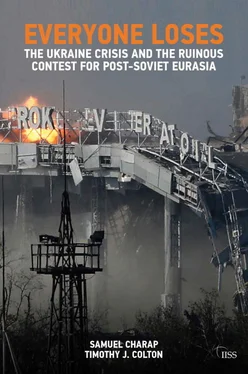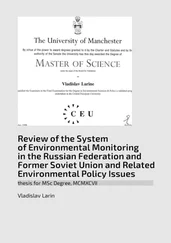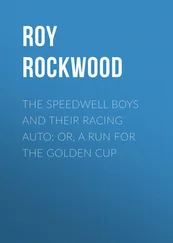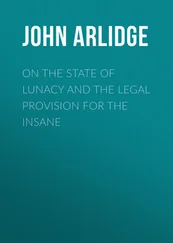He went on to explain that Moscow would take steps to protect its economy should these concerns go unaddressed.
Once the cameras were off, Putin made his position clear: besides altering the standards, 2,340 tariff lines in the DCFTA would have to be changed. The EU trade commissioner, Karel De Gucht, repeatedly rebutted Putin’s arguments about the injury Russia would suffer from the DCFTA. [66] Buckley et al., Unpublished reporting provided to the authors.
He and other EU leaders were sure that Putin’s demands were a ploy to scuttle the deal. [67] As one EU delegate involved in the talks said, ‘This whole concern about the [tariff lines] was always political, it wasn’t commercial.’ Quoted in Ibid.
They also had a parochial bureaucratic interest in rejecting Putin’s arguments. Altering just one tariff line – let alone 2,340 – would require the Commission to obtain a new mandate, necessitating a painstaking renegotiation among the 28 member states. This rigidity is a common feature of the EU’s international trade negotiations. It creates strong disincentives to amend course midstream, even when doing so would be sensible, as it was in this case.
Later, Putin asked Poroshenko to put off ratification of the deal in order to allow more time for talks. Poroshenko agreed to talks, but stood his ground on proceeding with ratification less than a month later. The Russian military’s assault on his forces that ended in the defeat at Ilovaisk on 2 September 2014 changed Poroshenko’s mind. In addition to agreeing to Minsk I, he also conceded to Putin’s demand to reopen the text of the AA to change the DCFTA. He presented this compromise to NATO leaders at their summit in Wales a few days later. ‘Mr Obama responded first, according to a person in the room. Was this something Ukraine wanted, or Mr Putin wanted? Mr Poroshenko made clear he was the one seeking it. Mr Obama turned to Ms Merkel: if the Ukrainians want it, why not? She agreed.’ But even Obama and Merkel were not prepared to take on the EU’s institutional unwillingness to revisit the AA. When they presented the compromise to Barroso, he was ‘incredulous’. ‘Barroso was, like, WTF?’ a US official recalled. Invoking the Maidan Revolution as evidence of what could happen if Poroshenko agreed to a renegotiation, Barroso, ‘desperate to find a way to keep the [AA] on track’, talked Obama and Merkel into renouncing the Ukrainian president’s deal with Putin and allowing ratification of the agreement to proceed. [68] Reporting by the Financial Times . Buckley et al., ‘Battle for Ukraine: How a Diplomatic Success Unravelled’; Buckley et al., Unpublished reporting provided to the authors.
In place of a renegotiation, the EU would ratify the AA but offer Russia a 15-month pause in implementation of the trade-related parts of the agreement, during which time fuller explanations and technical tweaks would be possible, but not substantive amendments.
EU commissioner De Gucht was to present this modified deal to Russia the following week. In the run-up to the meeting, the Russian government sent Brussels and Kyiv its proposals for the talks, which the latter duly leaked to a Ukrainian newspaper. The 59-page document called for extensive changes to the DCFTA, in accordance with Putin’s earlier demands, not trifling misunderstandings about the text that the EU could simply clarify. [69] For example, Russia would have allowed Ukraine to use non-EU (i.e., CIS) plant-safety standards in its trade with non-EU countries. Ukraine would retain the policymaking competences that the DCFTA cedes to Brussels. EEU members would be consulted on any major changes to Ukrainian legislation stemming from the EU approximation process, and the EU and Ukraine would commit not to adopt laws that negatively affect Ukraine’s trade with EEU members. And all 2,340 tariff lines that Putin referred to were listed. See ‘Predlozheniya rossiiskoi storony po vneseniyu popravok Soglasheniya ob assotsiatsii mezhdu ES i gosudarstvami – chlenami ES s odnoi storony i Ukrainoi s drugoi storony v tselyakh minimizatsii riskov, voznikayushchikh ot vstupleniya v silu ukazannogo soglasheniya’, http://zn.ua/static/file/russian_proposal.pdf .
The EU, in short, was fully aware that Moscow was expecting a renegotiation when the Russian minister Ulyukaev arrived in Brussels for the talks. De Gucht rejected the Russian proposal categorically and aired the 15-month pause offer. He told Ulyukaev that ‘the decision was simple: either we have a deal on the 15-month plan or we don’t. There would be no further compromise.’ Ulyukaev, in a move that would see him reprimanded upon his return home, agreed. One EU official involved in the talks celebrated the result: ‘[Russia’s] purpose was to delay the thing until doomsday and break it open on substance. On both counts, they failed.’ [70] Buckley et al., Unpublished reporting provided to the authors.
The two sides were still locked into their zero-sum geo-economic competition.
Moscow quickly walked back Ulyukaev’s concession. Putin wrote in a letter to EU officials that they could either agree to renegotiation of the DCFTA, or else Moscow would follow through on its threat to suspend the CIS free-trade arrangements and hike tariffs on Ukrainian exports to Russia. ‘We still believe that only systemic adjustments of the [DCFTA], which take into account the full range of risks to Russian–Ukrainian economic ties and to the whole Russian economy arising from implementation of the agreement, will allow [us] to retain [the] existing trade and economic [regime] between the Russian Federation and Ukraine’, he wrote. [71] Peter Spiegel, ‘Putin Demands Reopening of EU Trade Pact with Ukraine’, Financial Times , 25 September 2014, http://www.ft.com/cms/s/0/a4de51ae-44ca-11e4-9a5a-00144feabdc0.html .
The 15-month hiatus was a ‘period of clarification’, as the EU’s De Gucht put it, the purpose of which was to allow the EU to demonstrate to Russia that it had no reason to worry. [72] Robin Emmott, ‘Putin Warns Ukraine against Implementing EU Deal – Letter’, Reuters, 23 September 2014, http://www.reuters.com/article/us-ukraine-crisis-trade-idUSKCN0HI1T820140923 .
Russia and the EU were seeking geo-economic victory, not a compromise solution.
After 12 rounds of negotiations over 15 months, the talks unsurprisingly broke down at a final meeting in late December 2015. Russia reiterated its demand for a legally binding document to address its concerns and stated its intention to suspend the CIS trade arrangements vis-à-vis Ukraine. The EU accused Russia of putting forth ‘requests that were not substantiated’ and ruled out further talks until Moscow committed to holding tariffs on Ukraine steady. The Commission also issued a document in order to debunk ‘certain myths’ – that is, Russia’s objections to the DCFTA. The EU further reminded Russia that it never intended to compromise: ‘As has been conveyed from the beginning of the talks… the DCFTA cannot be amended – neither directly nor indirectly.’ In Putin’s account, the Russian delegation was told, ‘“The game is up”. [The EU delegation] then left [the room] and issued a press release [saying] that the Russian side broke off the talks’, a step he lamented as ‘not very European’. [73] ‘Godovoi raund peregovorov RF-ES-Ukraina po torgovle okonchilsya nichem’, TASS, 21 December 2015, http://tass.ru/ekonomika/2546713 ; European Commission, ‘No Outcome Reached at the Final Trilateral Ministerial Meeting on the EU–Ukraine Deep and Comprehensive Free Trade Area’, 21 December 2015, http://europa.eu/rapid/press-release_IP-15-6389_en.htm ; European Commission, ‘Trilateral Talks on EU–Ukraine DCFTA: Distinguishing between Myths & Reality’, December 2015, http://trade.ec.europa.eu/doclib/docs/2015/december/tradoc_154127.pdf ; ‘Putin rasskazal o “ne ochen’ evropeiskom” shage delegatsii ES v Bryussele’, lenta.ru , 22 December 2015, https://lenta.ru/news/2015/12/22/putin/ .
Читать дальше











